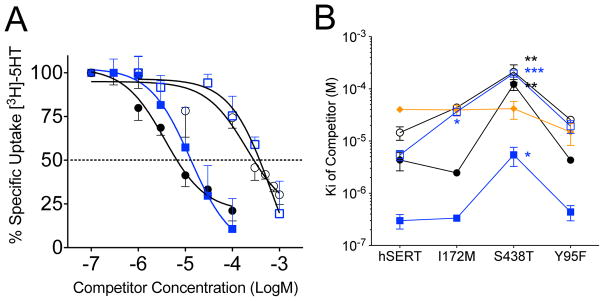Figure 4. Potency of antimalarial compounds to inhibit [3H]5-HT uptake by dSERT and hSERT.
(A) dSERT expressing oocytes were incubated with [3H]5-HT (200 nM) for and increasing concentrations of quinine (○), quinidine (●), cinchonine (
 ), cinchonidine (
), cinchonidine (
 ) for 20 min. Percent uptake was normalized to no drug control and plotted versus log of the competitor concentration. Data were fit to a one-site competition non-linear regression equation. (B) HeLa cells expressing hSERT or hSERT mutants important in high-affinity antidepressant binding were incubated with [3H]5-HT (50 nM) for 10 min in the presence of increasing concentrations of inhibitor quinine (○), quinidine (●), cinchonine (
) for 20 min. Percent uptake was normalized to no drug control and plotted versus log of the competitor concentration. Data were fit to a one-site competition non-linear regression equation. (B) HeLa cells expressing hSERT or hSERT mutants important in high-affinity antidepressant binding were incubated with [3H]5-HT (50 nM) for 10 min in the presence of increasing concentrations of inhibitor quinine (○), quinidine (●), cinchonine (
 ), cinchonidine (
), cinchonidine (
 ) amodiaquin (
) amodiaquin (
 ). Specific uptake was calculated and normalized as a percent of no drug control. The data were fit to a one-site competition non-linear regression equation and converted to Ki using the Km for 5-HT. The Ki values are plotted versus the mutant background. Data represent at least three independent experiments. Data were analyzed using a one-way ANOVA and a Bonferroni post-hoc test. *=P<0.05, **=P<0.01, ***=P<0.001 indicate significant difference compared to native hSERT.
). Specific uptake was calculated and normalized as a percent of no drug control. The data were fit to a one-site competition non-linear regression equation and converted to Ki using the Km for 5-HT. The Ki values are plotted versus the mutant background. Data represent at least three independent experiments. Data were analyzed using a one-way ANOVA and a Bonferroni post-hoc test. *=P<0.05, **=P<0.01, ***=P<0.001 indicate significant difference compared to native hSERT.

